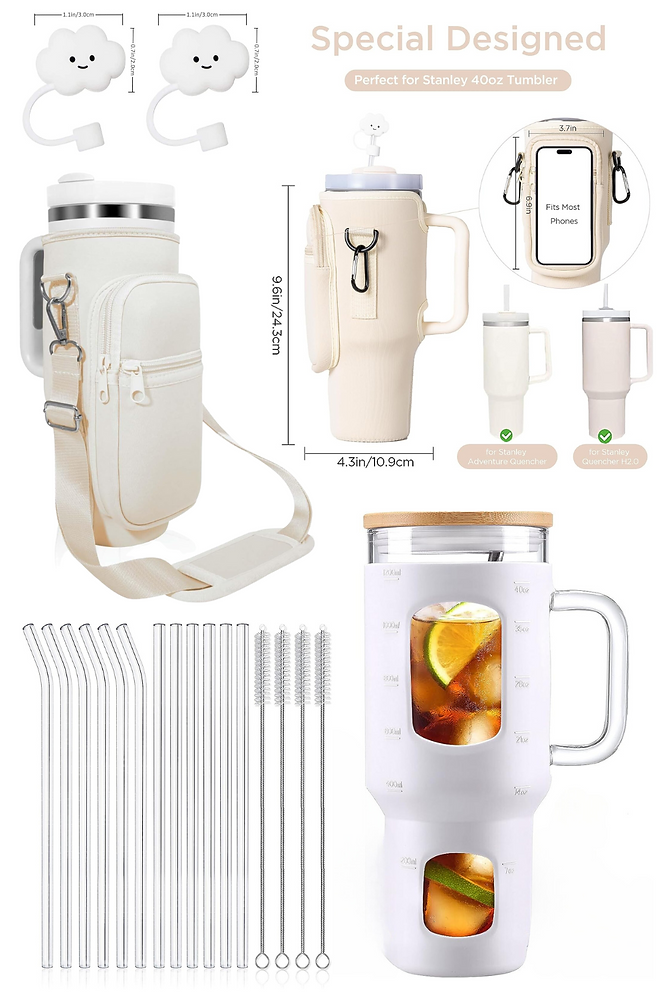Sipping Science:
Stylish Glass versus Stainless Steel
Kait Manson
Glass is often considered the safest medium to drink out of due to its non-reactive and transparent nature, while stainless steel is generally safe but may impart a metallic taste, leach trace metals in rare cases, and conduct temperature. Stainless steel can also experience corrosion, scratches, and staining over time, although proper care can mitigate these issues. The choice between glass and stainless steel for drinking vessels often depends on personal preference and the specific use case.

Glass is often considered a safe medium to drink out of for several reasons:
-
Non-reactive: Glass is chemically inert, which means it doesn't react with the substances it comes into contact with, including beverages. This prevents the glass from leaching any harmful chemicals or altering the taste of the drink. This is particularly important when consuming acidic or alkaline beverages.
-
Purity and Taste Preservation: Glass is non-reactive and doesn't leach harmful chemicals or metallic flavors into your beverages. This means your drink's taste remains untainted, allowing you to fully savor the intended flavors without any interference.
-
Hygienic and Easy to Clean: Glass is easy to clean, and it doesn't retain odors or flavors from previous drinks. It's also less likely to harbor bacteria, ensuring a cleaner and more hygienic drinking experience.
-
Environmentally Friendly: Glass is recyclable, making it an eco-conscious choice. By opting for glass over disposable plastic or other materials, you contribute to reducing environmental waste and pollution.
-
Transparency: The transparency of glass allows you to visually inspect your beverage for impurities or foreign particles, ensuring that what you're about to drink is safe and appealing.
-
Heat Resistance: Glass can handle both hot and cold liquids without compromising its integrity. You can use glass containers for a wide range of beverages, from ice-cold water to piping hot tea, without any concerns about warping or releasing harmful substances.
-
Aesthetic Appeal: Glass cups often have an elegant and timeless aesthetic, making them suitable for both everyday use and special occasions. They can enhance the presentation of your drinks, adding a touch of sophistication.
-
Longevity: High-quality glassware can last a long time if handled with care. It's less susceptible to corrosion and wear compared to some other materials, ensuring that your investment in glass cups pays off over the years.
On the other hand, stainless steel is generally considered safe for drinking, but there are some factors to consider:
-
Taste and odor: Stainless steel can sometimes impart a metallic taste or odor to the beverages, especially if the steel is not of high quality or if the surface has scratches or imperfections.
-
Leaching of metals: In very rare cases, stainless steel may leach trace amounts of metals like nickel, chromium, or iron into the beverage. However, the levels are typically minimal and well below established safety limits.
-
Insulation: Stainless steel is a good conductor of heat, which means it can transfer temperature quickly. While this can be advantageous for keeping beverages hot or cold, it can also make the exterior of the vessel extremely hot or cold to the touch, potentially causing discomfort.
Regarding what happens to stainless steel over time, it is a durable material, but it can experience some changes:
-
Corrosion: Stainless steel is known for its resistance to corrosion, but it's not completely immune. Over time, exposure to certain chemicals or environments may cause rust or corrosion on the surface of the steel. High-quality stainless steel is less prone to corrosion.
-
Scratches and wear: Stainless steel can get scratched or develop minor surface imperfections over time. These scratches can sometimes become sites for localized corrosion if exposed to corrosive substances.
-
Staining: Despite its name, stainless steel can sometimes develop stains, especially from hard water deposits, mineral buildup, or certain chemicals. Proper cleaning and maintenance can help minimize staining.
In conclusion, glass cups offer a safe, pure, and environmentally friendly way to enjoy your beverages. Their transparency, heat resistance, and aesthetic appeal make them a preferred choice for many who prioritize the quality and experience of their drinks. By choosing glass over stainless steel, you can ensure that your beverages are free from unwanted tastes or contaminants, contributing to a more enjoyable and health-conscious drinking experience.
*Disclosure: Some of the links above are affiliate links, meaning, at no additional cost to you, I will earn a commission if you click through and make a purchase. Please let me know if you have any questions about anything listed above!
Leave a comment, message us, take a picture and tag it @kaitmanson or hashtag #letsgetkomfy on instagram!

If you like copious amounts of coffee, do it yourself decor and vegan meal preps then let's be internet friends. On this blog you will find lifestyle tips from travel tips to eco-friendly and sustainable products along with weekly fitness and nutrition information. If you don't already follow me on social media then be sure to check out the links below to get a peak into my life and sneak peaks to the latest videos and blog posts.
Grab your mugs and let's get komfy!

.png)






.png)
.png)






.png)